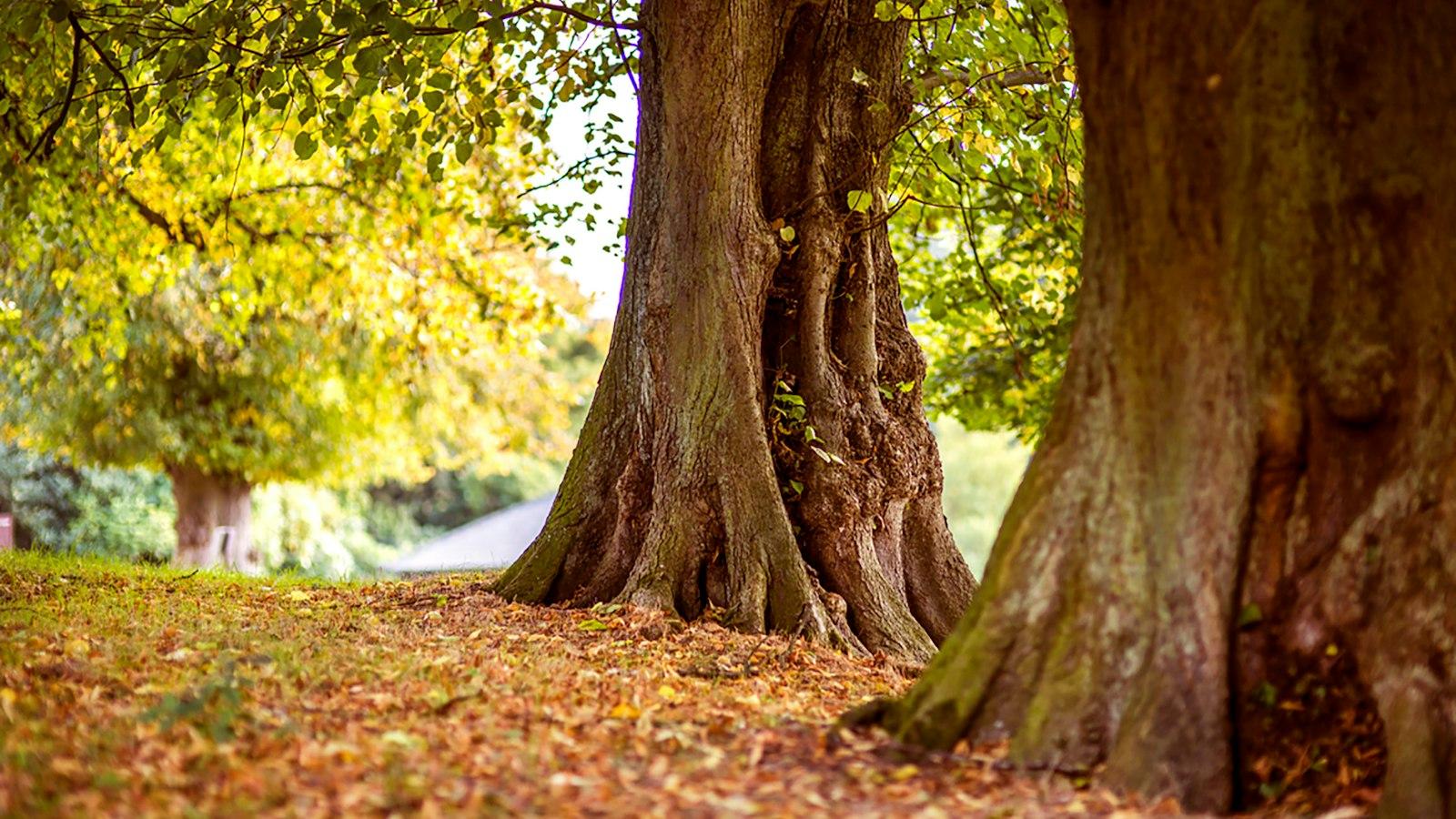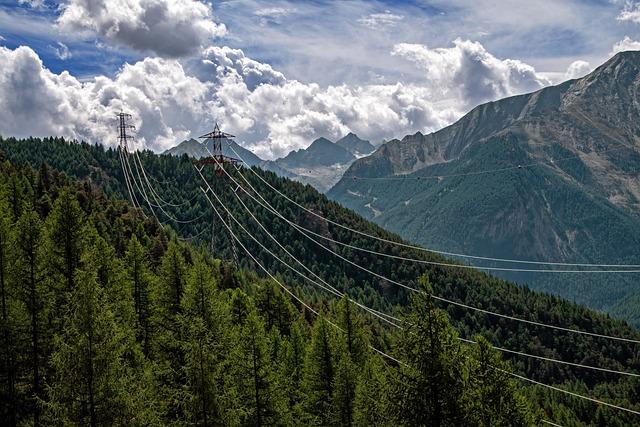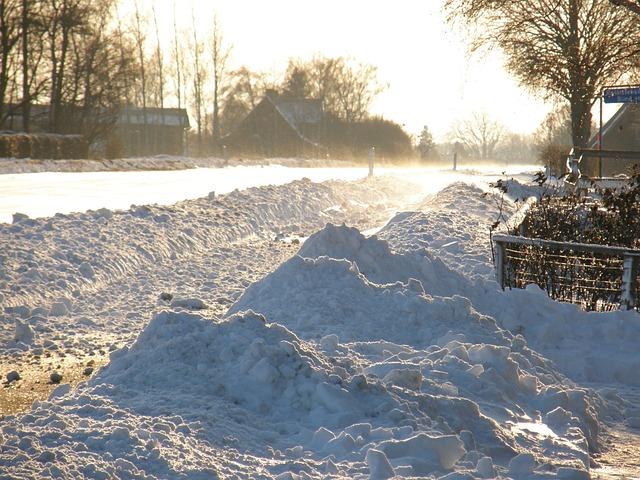: Understanding the Process and Benefits
Trees are an integral part of our natural environment, providing shade, enhancing the beauty of our landscapes, and even improving the air we breathe. However, there are instances when tree removal becomes necessary. Whether it’s due to the tree posing a safety hazard, impeding construction projects, or showing signs of disease or decay, understanding the process and benefits of tree removal is crucial. In this article, we will delve into the various aspects of tree removal, offering essential insights into the protocols involved, the potential environmental impact, and the benefits it can bring to both property owners and the surrounding ecosystem. By shedding light on this often undervalued aspect of arboriculture, we hope to provide readers with a comprehensive understanding of tree removal and its implications.
Table of Contents
- The Importance of in Urban Environments
- Understanding the Risks and Problems Associated with Overgrown Trees
- Methods and Techniques for Safe and Effective
- Factors to Consider When Planning and Executing
- Practical Steps to Minimize Damage and Ensure Safety during
- A Guide to Hiring Professional Services
- Environmental Consequences and Mitigation Strategies of Actions
- Post-Removal Considerations: Replanting and Maintenance for Sustainable Landscapes
- Q&A
- Conclusion
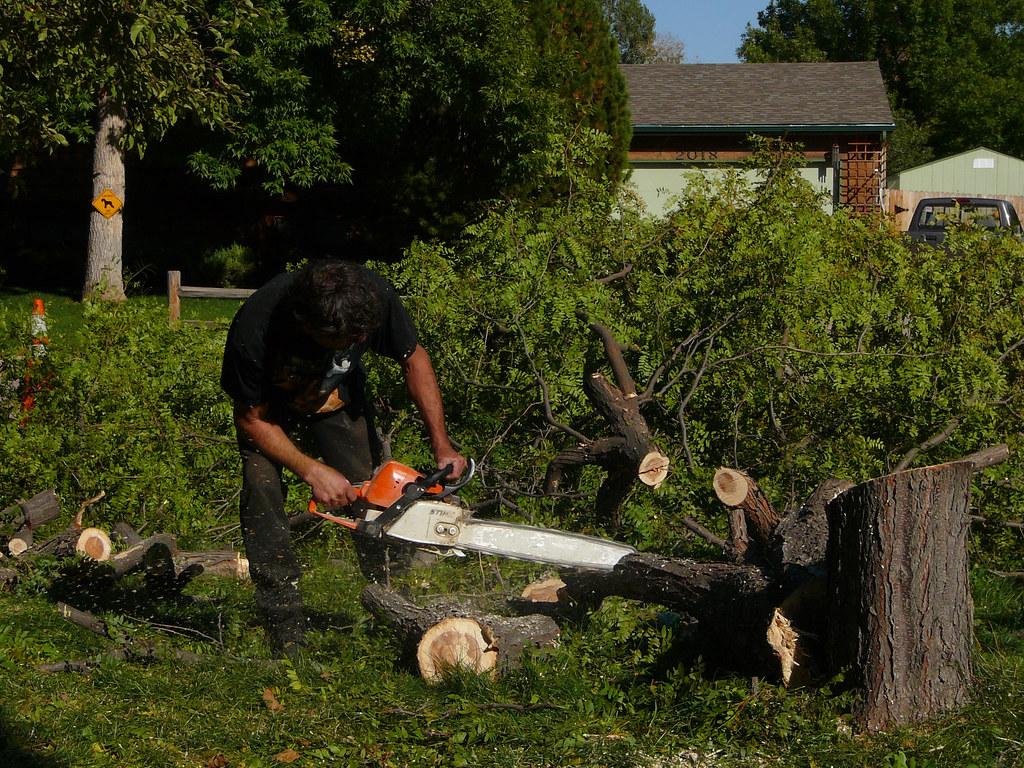
The Importance of in Urban Environments
When it comes to urban environments, the importance of tree removal cannot be understated. Trees are a vital part of any cityscape, providing numerous benefits to both the environment and the community. However, there are situations where tree removal becomes necessary to ensure the safety and well-being of residents and infrastructure.
One of the key reasons for tree removal in urban areas is the risk they pose during extreme weather events. Strong winds and heavy storms can cause trees to uproot or break branches, leading to damage to buildings, vehicles, and even injuries to people. By removing trees that are at risk of falling or causing harm, cities can significantly reduce the chances of such incidents occurring.
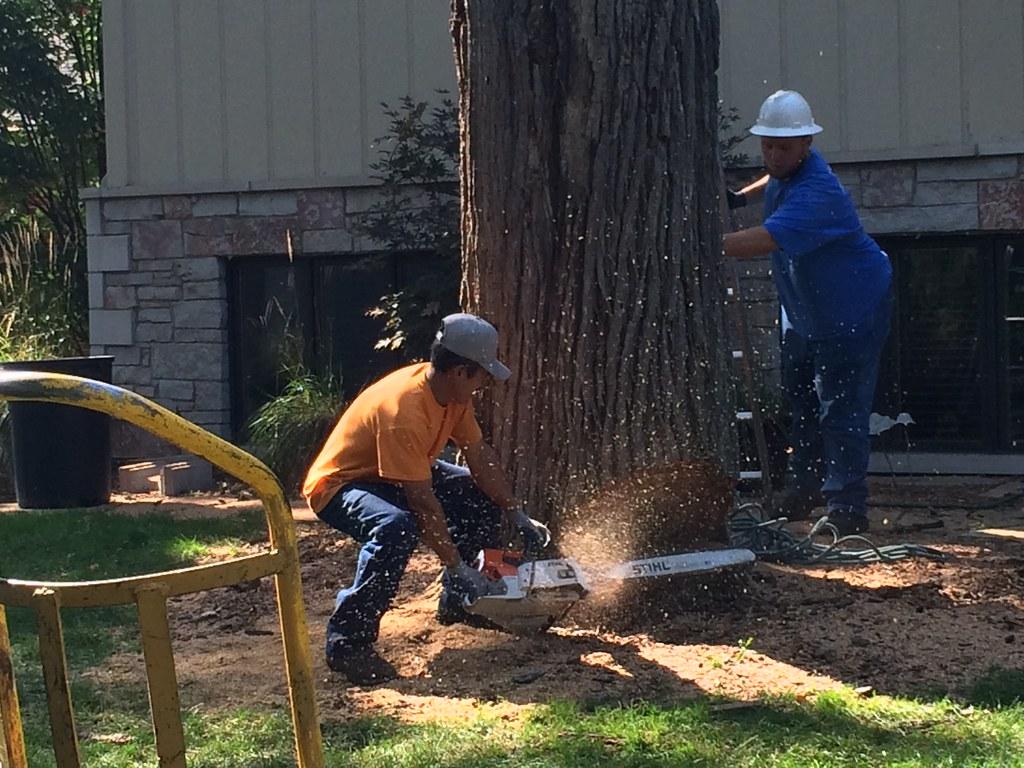
Understanding the Risks and Problems Associated with Overgrown Trees
Overgrown trees can pose significant risks and problems if not properly managed. One of the main risks is the potential for property damage caused by falling branches or an entire tree. As trees grow larger and taller, their branches become heavier and more susceptible to breakage, especially during storms or high winds. This can result in property damage such as broken windows, damaged roofs, or even structural collapse. Additionally, overgrown trees may also interfere with power lines, presenting a serious safety hazard.
Another problem associated with overgrown trees is the obstruction of views and sunlight. When trees grow too large, they can block natural light from entering your home or yard, making the space feel darker and restricting plant growth. This lack of sunlight can be detrimental to the health of other plants in your garden or yard, as they rely on sunlight for photosynthesis. Furthermore, obstructed views can be a source of frustration, especially if you have a beautiful surrounding landscape or if you rely on natural light for specific activities, such as gardening or painting.
To mitigate these risks and problems, regular tree maintenance is crucial. This may involve pruning, trimming, or in extreme cases, tree removal. Pruning helps to maintain a tree’s shape and structure, while also removing dead or diseased branches. Trimming, on the other hand, focuses on selectively cutting back branches to keep the tree in check and prevent it from encroaching on structures or power lines. However, in some instances, tree removal may be necessary, especially if a tree is diseased, dead, or severely overgrown. It is important to consult a professional arborist to assess the situation and determine the appropriate course of action.
To conclude, overgrown trees bring with them a variety of risks and problems that can impact both the safety and aesthetics of your property. Regular tree maintenance, including pruning, trimming, and tree removal when necessary, is essential for ensuring a safe and enjoyable outdoor environment. By addressing these issues proactively, you can avoid potential property damage, obstruction of views, and sunlight deprivation. Remember to consult a professional arborist for expert guidance on tree care and maintenance.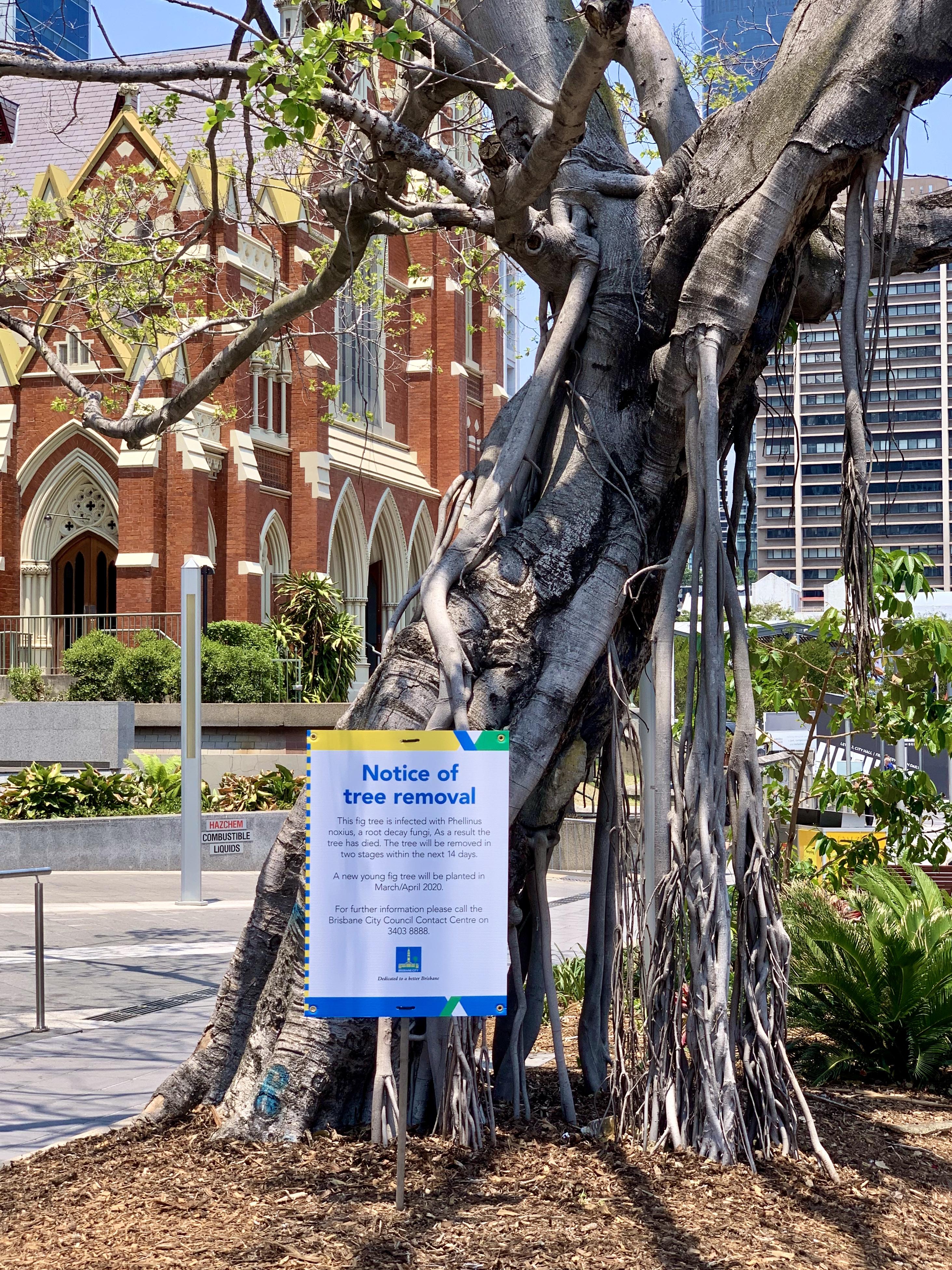
Methods and Techniques for Safe and Effective
When it comes to removing trees, it is crucial to employ safe and effective methods and techniques. Whether you need to clear space for a new construction project or need to eliminate a hazardous tree, following the right procedures can ensure a smooth and secure removal process.
1. Assess the situation: Before starting any tree removal project, it is important to assess the situation carefully. Determine the size of the tree, its condition, and any potential obstacles in the surrounding area. This assessment will help you plan the removal process, identify any potential risks, and decide on the appropriate tools and equipment needed.
2. Use proper cutting techniques: When it is time to cut down the tree, it is essential to use proper cutting techniques to ensure safety. Start by making a notch on the side you want the tree to fall. Next, make a cut on the opposite side, slightly above the notch. This technique, known as the back-cut, helps control the direction of the fall. It is crucial to make these cuts accurately and avoid cutting too deeply, as it can weaken the tree and increase the risk of it falling in the wrong direction.
While these two steps provide a general overview of safe and effective tree removal, it is important to note that each situation is unique, and it is recommended to hire a professional tree removal service for complex or challenging projects. These experts have the experience, knowledge, and equipment necessary to carry out the task safely and efficiently.
By implementing these methods and techniques, you can ensure that tree removal is conducted safely and effectively. Remember to always prioritize safety and consult professionals when needed.
Factors to Consider When Planning and Executing
When it comes to tree removal, proper planning and execution are essential to ensure the safety of both people and property. Whether you are a homeowner or a professional tree service provider, considering the following factors will help you carry out tree removal in a safe and efficient manner:
- Tree Assessment: Before starting the removal process, it is crucial to assess the tree and its surroundings. Evaluate the tree’s health, structural integrity, and potential risks such as proximity to power lines, buildings, or other trees. This assessment will determine the appropriate approach for removal and any safety precautions needed.
- Permits and Regulations: Check with your local authorities regarding permits or regulations that may be required for tree removal. Some areas have restrictions on cutting down certain tree species or on removing trees without permission. Make sure to comply with all applicable rules to avoid legal issues and penalties.
- Safety Measures: Tree removal can be hazardous, so taking safety measures is crucial. Ensure that you and anyone involved in the process are equipped with the necessary personal protective equipment (PPE) such as hard hats, gloves, safety glasses, and sturdy footwear. It may also be necessary to cordon off the work area to prevent unauthorized access.
- Techniques: There are different methods for tree removal, depending on various factors such as tree size, location, and surrounding objects. These techniques include directional felling, sectional dismantling, and crane-assisted removal. Choose the most appropriate technique based on the tree’s characteristics and the site conditions.
Tree removal is not a task that should be taken lightly. By considering these factors and planning accordingly, you can ensure the successful and safe removal of a tree. Remember to always prioritize safety and follow best practices when undertaking any tree removal project.

Practical Steps to Minimize Damage and Ensure Safety during
:
Removing a tree from your property can be a challenging task that requires careful planning and execution. To minimize potential damage and ensure the safety of everyone involved, it is important to follow practical steps during the tree removal process.
1. Conduct a thorough assessment: Before starting the tree removal process, evaluate the tree’s condition, size, and location. Identify any potential hazards such as power lines, buildings, or nearby structures that could be affected during the removal. This assessment will help you determine the best approach for the tree removal and any additional precautions that may be necessary.
2. Establish a safety zone: Clear the area around the tree and mark a safety zone to prevent anyone from entering the vicinity during the removal process. Use caution tape or barriers to ensure that no one gets too close to the work area. Inform neighbors about the tree removal to avoid any unexpected accidents.
During the actual tree removal, it is crucial to employ proper techniques and use the necessary tools. Hiring a professional tree removal service can ensure that the job is done safely and efficiently. They have the expertise and equipment to handle challenging tree removals while minimizing damage to the surrounding area.
Remember, tree removal should only be done by trained professionals to prevent accidents and ensure the safety of everyone involved. By following these practical steps, you can minimize damage and guarantee a safe tree removal process.
[Table]
[HTML Table with WordPress styling]
| Step | Description |
|——|————-|
| 1 | Conduct a thorough assessment |
| 2 | Establish a safety zone |
[/Table]
[Bold]Remember, safety should be your top priority during tree removal. Proper planning and precautionary measures can make the process smoother and prevent any unnecessary accidents.[/Bold]
By incorporating these practical steps and following safety guidelines, you can successfully remove a tree from your property while minimizing damage and ensuring the safety of everyone involved.
A Guide to Hiring Professional Services
When it comes to removing trees from your property, it is essential to hire professional tree removal services to ensure safety and proper execution. Tree removal can be a complex task that requires specialized skills and equipment, so it’s important to choose a reputable service provider who can handle the job effectively. Here are some crucial considerations to keep in mind when hiring professional tree removal services:
- Experience and Expertise: Look for tree removal companies that have extensive experience in the industry. A well-established business is more likely to have the necessary expertise to handle different types of tree removal projects, including challenging situations like hazardous tree removal or emergency tree services.
- Licensing and Insurance: Always verify that the tree removal service provider is properly licensed and insured. This ensures that they adhere to industry standards and regulations, and adequate coverage is in place to protect you from any potential liability in case of accidents or damages during the tree removal process.
- References and Reviews: Request references from the tree removal company and take the time to read online reviews or testimonials from their previous clients. This can give you valuable insights into the quality of their work, professionalism, and customer satisfaction.
- Safety Measures: Ask about the safety protocols and equipment used by the tree removal service. They should follow industry best practices, utilize appropriate safety gear, and have a clear plan for tree removal to minimize potential risks.
By considering these factors and conducting thorough research, you can confidently select a professional tree removal service that meets your specific needs. Remember, prioritizing safety, experience, and credentials will ensure a smooth and successful tree removal process, ultimately enhancing the safety and aesthetics of your property.
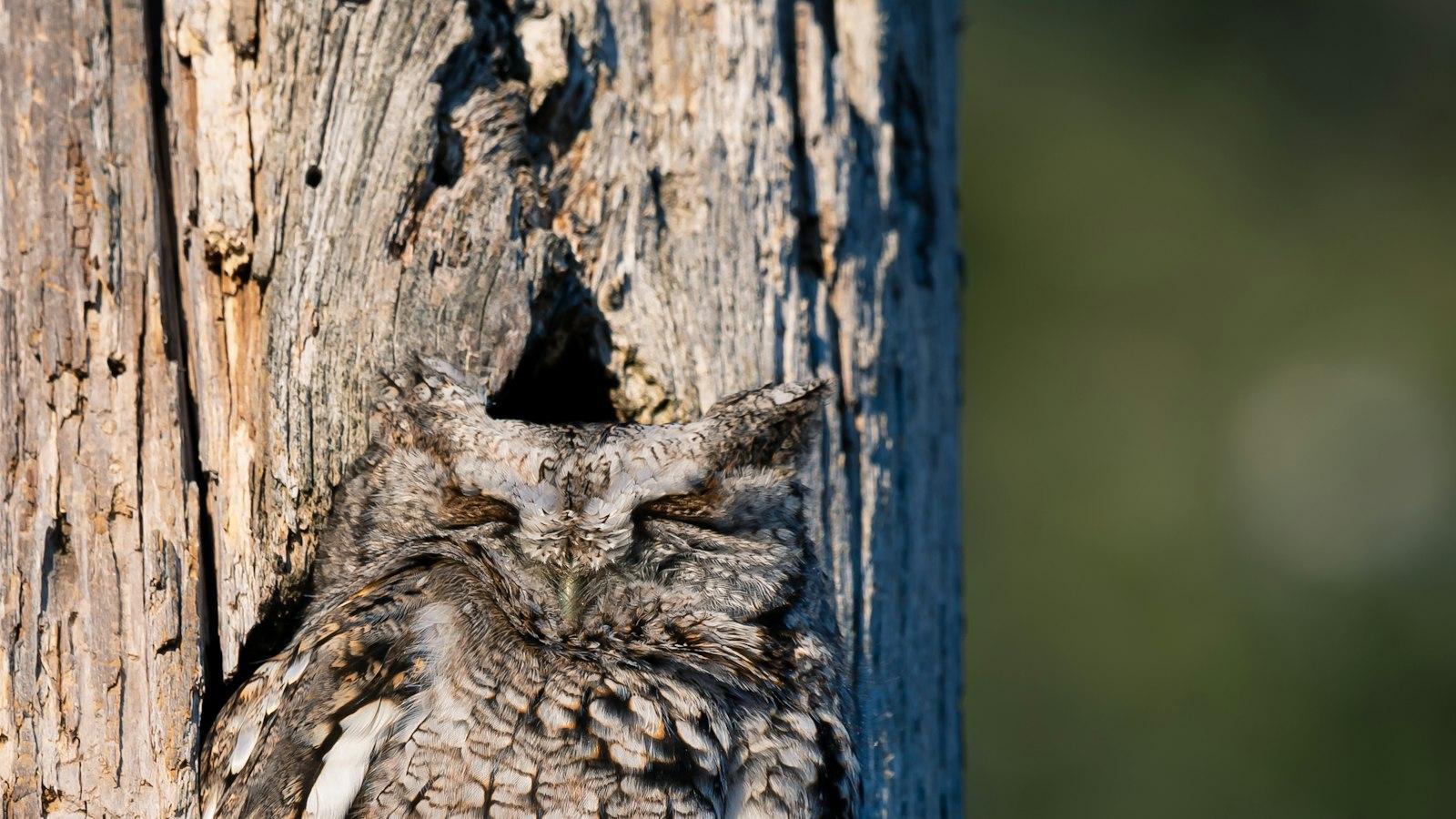
Environmental Consequences and Mitigation Strategies of Actions
Paragraph 1:
Tree removal is a complex process that can have significant environmental consequences if not approached with caution. One of the primary concerns associated with tree removal is the impact on the local ecosystem. Trees play a crucial role in providing habitat for various species, contributing to biodiversity in the area. Therefore, the removal of trees can disrupt the balance of the ecosystem, leading to the displacement or even extinction of certain animal and plant species.
To mitigate these environmental consequences, it is important to implement appropriate strategies. One strategy is to engage in habitat restoration activities. This involves replanting native tree species in the area where the tree removal occurred. By doing so, the lost habitat can be partially restored, providing a new home for wildlife. Additionally, this approach helps in preserving the overall biodiversity of the region and promoting environmental sustainability. Another essential mitigation strategy is the implementation of proper waste management practices. This includes recycling and reusing tree material whenever possible, minimizing the amount of waste that ends up in landfills. By handling the waste responsibly, the negative environmental impacts associated with tree removal can be minimized.
Paragraph 2:
In addition to the direct environmental consequences, tree removal actions can also have indirect effects on the surrounding landscape. One such effect is the alteration of soil conditions. Trees play a vital role in preventing soil erosion by acting as natural barriers against wind and water. Without trees, the soil becomes more vulnerable to erosion, leading to runoff and sedimentation in nearby water bodies. This can have detrimental effects on water quality, affecting aquatic life and ecosystems.
To tackle these issues, erosion control measures should be implemented during and after the tree removal process. These measures can include the installation of erosion control blankets or the planting of ground cover plants to stabilize the soil and prevent erosion. Additionally, proper stormwater management practices should be put in place to minimize the impact of runoff on nearby waterways. By implementing these mitigation strategies, the adverse consequences associated with tree removal on soil conditions and water quality can be significantly reduced.
In conclusion, tree removal actions have a range of environmental consequences that must be addressed through appropriate mitigation strategies. By understanding the impact on the ecosystem and implementing effective measures, we can minimize these consequences and ensure the sustainability of our natural environment. It is crucial to prioritize the restoration of habitat, responsible waste management, and erosion control to protect and preserve the delicate balance of our ecosystems.
Post-Removal Considerations: Replanting and Maintenance for Sustainable Landscapes
When it comes to tree removal, it is essential to consider the post-removal steps to ensure that the landscape remains sustainable and healthy. Replanting and maintenance play a crucial role in maintaining the aesthetics and functionality of the area.
Replanting is the process of replacing the removed tree with a new one. It is vital to select a tree species that is suitable for the environment and can thrive in the specific conditions of the area. Consider factors such as soil type, sunlight exposure, and water availability when choosing a tree. This will ensure that the newly planted tree has the best chance of survival and growth. Common tree species for replanting include maple, oak, and pine.
Once the new tree is planted, maintenance becomes crucial to its long-term health. Regular watering, especially in the initial stages, is essential to help the roots establish and ensure proper hydration. Mulching around the base of the tree can help retain moisture and regulate soil temperature. Additionally, regular pruning is vital to maintain the tree’s shape, remove dead branches, and promote healthy growth.
To further enhance the sustainability of the landscape, consider incorporating other elements such as native plants and shrubs. These plants are adapted to the local climate and require less maintenance and resources. They also provide food and shelter for local wildlife. Incorporating a diverse range of plants can create a balanced ecosystem and enhance the overall beauty of the area.
In summary, after tree removal, replanting and maintenance are crucial for sustainable landscapes. Carefully select a suitable tree species and ensure proper watering, mulching, and pruning. Consider incorporating native plants and shrubs to enhance the ecosystem. By following these post-removal considerations, you can create a healthy and thriving landscape for years to come.
Q&A
Q: What is tree removal?
A: Tree removal refers to the process of cutting down and removing a tree from its original location, typically due to various reasons such as safety concerns, tree health, property development, or landscape changes.
Q: Why would someone need to remove a tree?
A: There are several reasons why tree removal may be necessary. Some common reasons include dead or dying trees posing potential hazards, trees with extensive structural damage, trees obstructing property development or landscaping plans, or trees affected by diseases and pests that cannot be treated.
Q: Can tree removal be done by anyone?
A: Tree removal is a specialized task that requires the skills and knowledge of arborists or trained professionals. It is not recommended for untrained individuals to attempt tree removal as it can be dangerous and may cause property damage or personal injury.
Q: Are there any regulations or permits required for tree removal?
A: Regulations regarding tree removal vary depending on the location and the municipality. Many cities and towns have specific guidelines in place to protect tree canopy and ensure responsible tree removal practices. It is advisable to contact local authorities or consult with a professional to determine if any permits or permissions are required for tree removal in a particular area.
Q: Is tree removal an environmentally friendly practice?
A: While tree removal itself may involve cutting down a tree, it can still be considered environmentally friendly when done responsibly. Reputable tree removal companies often prioritize tree preservation whenever possible and only remove trees that pose safety risks or cannot recover from damage or disease. Additionally, they may offer tree replanting services or suggest suitable alternatives to maintain the ecological balance.
Q: How much does tree removal typically cost?
A: The cost of tree removal can vary depending on factors such as the size of the tree, its location, the complexity of the job, and any additional services required, such as stump grinding or debris removal. It is advisable to obtain quotes from multiple tree removal companies to compare prices and ensure a fair estimate.
Q: Is it possible to save a tree instead of removing it?
A: In many cases, trees can be saved through proper care and maintenance. Consulting with a certified arborist can assess the tree’s health and recommend appropriate measures like pruning, tree injections, or soil treatments to prevent tree removal. Preservation should always be considered before resorting to removal, promoting a healthy ecosystem and preserving natural aesthetics.
Q: What should I do with the wood and debris after tree removal?
A: Reputable tree removal companies typically offer additional services like removing wood and debris from the property. Wood can be used for firewood, sold, or recycled, depending on local regulations and personal preferences. Additionally, some tree removal companies offer stump grinding services to remove tree stumps, leaving the area ready for future landscaping projects.
Q: Can I replant a tree in the same spot after a tree is removed?
A: In many cases, it is possible to replant a new tree in the same spot after the removal of another. However, it is essential to consider factors such as soil conditions, space requirements, and the tree species suitable for the location. It is advisable to consult with an arborist or a knowledgeable nursery professional to select the appropriate tree for replanting and ensure its successful growth.
Q: How often should trees be inspected for potential removal?
A: As a general guideline, trees should be inspected annually by a certified arborist to assess their health and structural stability. Regular inspections allow early identification of any issues that might require action, ensuring timely intervention and preventing the need for tree removal in the long run.
Conclusion
In conclusion, tree removal is an essential aspect of maintaining the balance between urban development and environmental conservation. While the decision to remove a tree should never be taken lightly, it is crucial to weigh the potential risks and benefits. Professional arborists play a critical role in assessing the health and safety of trees, ensuring that removal is carried out when necessary and with minimal impact on the surrounding ecosystem. Recognizing the importance of tree preservation, various regulatory bodies have implemented guidelines and permits to govern the process of tree removal. By adhering to these regulations and seeking expert advice, we can safeguard our natural environment and create safer living spaces for ourselves and future generations. So, whether it is for safety concerns or urban expansion needs, understanding the intricacies of tree removal and working with qualified professionals can help us strike a balance between progress and environmental stewardship.
Simpsons Tree Services, Servicing Melbourne’s North Eastern Suburbs
Book a quote online at www.simpsonstrees.com.au

